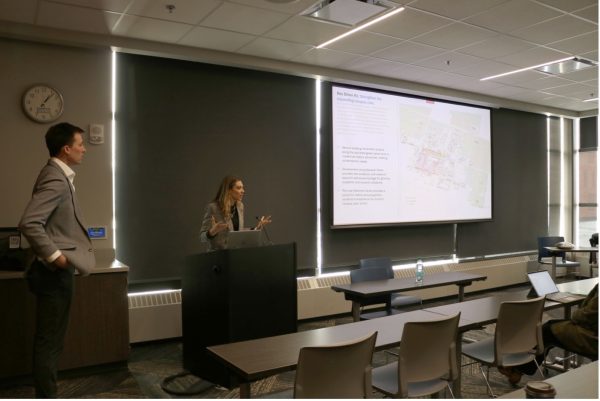Student tuition, fees increase another year
April 17, 2012
Choosing to attend SDSU because of the low tuition costs is at risk of becoming extinct as tuition for SDSU, and two other South Dakota Board of Regents schools, is rising once again.
In a press release for the approval of the rising costs, the BOR outlines the increase to be $463.97 per year, or a raise of 6.5 percent. This increase is only for the three research universities within the system — SDSU, USD and South Dakota School of Mine and Technology.
The BOR said, in the press release, that the change will “allow these universities to generate and retain more tuition income in support of their broader research mission, as well as better align costs with the tuition charged.”
“We sought to keep this cost to students as low as possible, while still addressing enrollment growth, service to students, and delivering the highest quality education possible,” said Regents President Kathryn Johnson in the release.
Janelle Toman, the director of communications for the BOR, echoes the statement of the Regents president, as well as adding that faculty salaries were also a deciding factor in the increase.
“There are several cost drivers that impact our tuition and fees schedule, and one of the biggest ones this year was that the legislature did agree to provide a salary package to state employees including faculty and staff members at the university,” Toman said.
Tuition and fees are often affected by salary raises. According to Toman, 41 percent of the costs for salaries are covered by the state, with the remaining 59 percent having to be covered by the BOR. Despite the raise, Toman insists that the BOR has the students in mind when meddling with tuition rates.
“The Board is very careful to never raise tuition and fees unless there’s a reason for it,” said Toman.
An increase in health insurance for employees and inflation, which Toman says is always a big part of what drives costs, are also linked to the tuition increase for the three universities.
The costs for students at these three facilities will be $129.90 per credit hour, an average in-state undergraduate taking 30 credits a year will be paying $7,563.67. This estimate also includes the University Support Fee and the General Activity Fee. The new rates will be applied during the 2012- 2013 school year, beginning in the summer semester.
South Dakota is currently ranked fourth among lowest tuition rates for instate undergraduate students at a total cost of $13,124. This number is judged on the cost of an undergraduate resident student taking 32 credit hours, living in a double resident hall room and purchasing a full meal plan. Idaho ranks lowest at $11,708.
The BOR also called attention to the fact that the amount of credits required to graduate from most bachelor degree programs have been decreased from 128 to 120 possibly saving money for those on a tight four-year degree path.
Despite the decrease in the amount of credits needed to graduate, some SDSU students are not excited about the increase. Hassan Ali, a junior political science and international relations major, was unimpressed with how little he has heard about the increase in tuition, as well as the silence of the Students Association.
“I think everything is grassroots. If Students Association would have lead the effort for students to talk to their elected leaders, to call the governors office… [to have] an opportunity to let them know how we feel, as our elected officials they [would] have a responsibility to fight for education and make sure that tuition isn’t jacked up by 6.5 percent in a single year,” he said.
Although students may not be aware of the increase, Ali is positive that they will be aware when the increase goes into effect for the summer session.
“Students are going to notice it when it hits them, and it’s going to be too late for us to do anything about it when it does go into effect,” Ali said. “I think it’s ridiculous for tuition to raise 6.5 percent and for the student body to just act like nothing has happened, like it’s just another day.”




















